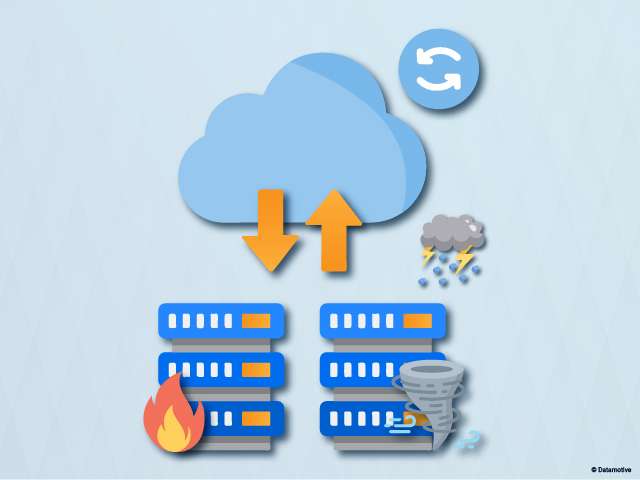Businesses today are profoundly dependent on technology. However, one simply cannot ignore the risk of getting hit by cyberattacks, natural disasters, or simply some hardware failure. This is the point where disaster recovery comes into play. It has an extremely important role in such circumstances. Cloud based disaster recovery solutions and strategies have become fully revolutionized with the advent of cloud computing, which enhances core scalability and redundancy. Important things related to disaster recovery in cloud computing are discussed in the article below.
What is Disaster Recovery in Cloud Computing?
Cloud disaster recovery for businesses refers to the strategies and services businesses implement to back up their workload, data, applications, and infrastructure to cloud. This makes sure the business continuity remains intact in case of disaster. Traditional DR solutions involve maintaining a separate physical data center. On the other hand, cloud DR uses the cloud's resources to provide a cost-effective and scalable solution.
Key Components of Cloud DR
The major components of cloud DR are:
- Data backup and replication: This includes regular backups and data replication (cloud backup and disaster recovery) to a geographically dispersed cloud location, ensuring data availability even if the primary location is compromised.
- Virtualization and Infrastructure as a Service (IaaS): Virtualizing servers and applications can be easily migrated into a secondary cloud environment during disaster. IaaS providers have strong infrastructure that can scale quickly in case of increased demand.
- Disaster Recovery as a Service (DRaaS): DRaaS providers offer full DR solutions, such as backing up, replicating, and failover capabilities. This eliminates the need for any organization to manage its DR infrastructure.
- Business continuity planning (BCP): A BCP plan defines an organization's actions in response to a disaster, such as communication, roles, responsibilities, and recovery.
Benefits of Cloud DR
There are numerous benefits of cloud disaster recovery. Some of these benefits are:
- Cost-effectiveness: Cloud DR eliminates any need of expenditure for a backup data center by saving upfront costs.
- Scalability and flexibility: It is possible to scale up or down Cloud resources easily, providing flexibility during a disaster.
- Reduced recovery time objective (RTO): Cloud DR allows faster recovery times as it has automated processes and readily available resources.
- Enhanced data security: Cloud providers offer strong security measures to protect data from cyber threats.
Challenges of Cloud DR
Though cloud DR has various benefits, it also has its own challenges. A few of them include:
- Vendor lock-in: Due to vendor-specific technologies, many organizations face challenges migrating to a different cloud provider.
- Data security and compliance: Ensuring data security and compliance with regulations like GDPR is important.
- Performance and latency: During a failover, network latency can impact application performance.
Advanced Cloud DR Considerations
- Multi-cloud DR: In order to enhance the resilience and avoid vendor lock-in, the workloads are Distributed across multiple cloud providers (disaster recovery in multi-cloud environments).
- Hybrid cloud disaster recovery: A hybrid DR approach offers flexibility and cost-effectiveness. For this, on-premises infrastructure with cloud resources is combined.
- Artificial intelligence (AI) and machine learning (ML) for DR: Utilize AI and ML for predictive analytics, automated recovery orchestration, and proactive risk identification.
By implementing the above-mentioned cloud disaster recovery best practices and strategies, organizations can successfully build a strong and resilient cloud DR infrastructure. This will protect their critical business operations.
Conclusion
Cloud computing has made an absolute difference in the present Cloud Disaster Recovery for businesses scenario through solutions that are cost-effective, scalable, and resilient enough in their nature. As is seen, organizations use their capabilities to minimize disasters for business continuity. As cloud technology continues to develop and evolve, so will the DR strategies—the best way to continue fostering business resilience in unforeseen disasters.
